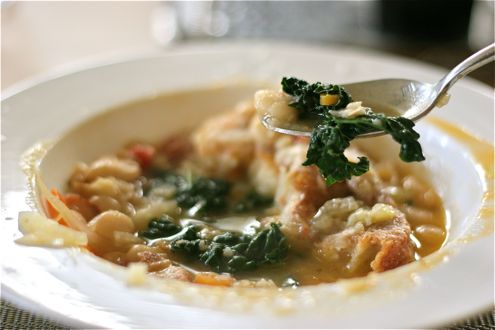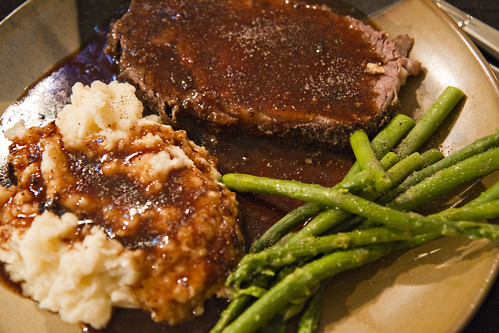Food is used to help celebrate special occasions in different cultures like Christmas, New Year, weddings and birthdays and other festivals. Food is an important part of any celebration in all nations of the world, regardless of culture or religion.
Share
this articleEmail this article Add link to social media Facebook, Myspace, Twitter Download
this article PDF text & pictures for sharing & saving
Food is an important part of any celebration in all nations of the world, regardless of culture or religion. It can unite and strengthen community bonds and helps to maintain a common identity among a group of people. Different countries use food in different ways to help celebrate special occasions like Christmas, New Year, weddings and birthdays.
Christmas
Many Christmas symbols, such as mistletoe and Christmas cards, spread to the world from Great Britain. This is why many countries that were once part of the old British Empire - Australia, New Zealand and South Africa, for example - have similar Christmas customs.
Most of the foods typically associated with Christmas, such as mince pies and fruit cake, also arose from British tradition. In Australia, it is becoming increasingly popular to enjoy seafood on Christmas Day, rather than roast meats and ham, due to our warmer weather.
Traditional Christmas foods differ from one social group to the next, depending on local availability and cultural significance. Some examples include:
France - black and white pudding, which is sausage containing blood
French Canada - desserts like doughnuts and sugar pie
Germany - gingerbread biscuits and liqueur chocolates
Nicaragua - chicken with a stuffing made from a range of fruits and vegetables including tomato, onion and papaya
Russia - a feast of 12 different dishes, representing Christ’s disciples.
New Year
Traditional New Year foods around the world include:
Greece - a special sweet pasty baked with a coin inside it
Japan - up to 20 dishes cooked and prepared one week earlier. Each food represents a New Year’s wish; for example, seaweed asks for happiness in the year ahead
Scotland - haggis (sheep’s stomach stuffed with oatmeal and offal), gingerbread biscuits and scones
Spain - 12 grapes, meant to be put into the mouth one at a time at each chime of the clock at midnight.
Lunar New Year
In many Asian countries, the New Year doesn’t start on January 1, but with the first full moon in the first Chinese lunar month. Traditional New Year food includes:
China - fish, chestnuts and fried foods
Korea - dumpling soup
Vietnam - meat-filled rice cakes and shark fin soup.
Weddings
Around the world, weddings share common ground. No matter what the religion or culture, the typical wedding is a joint celebration for the families that involves a wedding cake and traditional foods. Foods that feature prominently in weddings include:
China - roast suckling pig, fish, pigeon, chicken, lobster and a type of bun stuffed with lotus seeds are commonly served. It is especially important to offer both lobster and chicken: the lobster represents the dragon and the chicken the phoenix, so including both on the menu is thought to harmonise the Yin and Yang of the newly joined families.
Indonesia - foods served depend on the region and religion, but could include spicy rice dishes like nasi goreng, dim sum, sushi or even Western recipes like beef wellington.
Italy - food is a very important part of an Italian wedding. Bow tie-shaped twists of fried dough, sprinkled in sugar, represent good luck. A roast suckling pig or roast lamb is often the main dish, accompanied by pastas and fruits. The traditional Italian wedding cake is made from biscuits.
Korea - noodles are served, because they represent longevity.
Norway - the traditional wedding cake is made from bread topped with cream, cheese and syrup.
Britain - the honeymoon has been said to originate from a time when the father of the bride gave the groom a moon’s (month’s) worth of mead (alcoholic beverage made from honey) before the bride and groom left after the ceremony.
Birthdays
The custom of the birthday party originated in medieval Europe, when it was supposed that people were vulnerable to evil spirits on their birthdays. Friends, family members, festivities and presents were thought to ward off the spirits. Traditional birthday foods from around the world include:
Australia - birthdays are often celebrated by sharing a decorated birthday cake with lit candles, which the person celebrating the birthday blows out while making a wish.
England - a cake may be baked containing symbolic objects that foretell the future. If your piece of cake has a coin, for example, you will one day be wealthy.
Ghana - the child’s birthday breakfast is a fried patty made from mashed sweet potato and eggs. Traditional birthday party fare includes a dish made from fried plantain (a kind of banana).
Korea - for their first birthday, the child is dressed and sat before a range of objects including fruit, rice, calligraphy brushes and money. Whichever item the child picks up predicts their future; for example, picking up the rice indicates material wealth. After this ceremony, the guests eat rice cakes.
Mexico - a papier-mâché container in the shape of an animal (piñata) is filled with lollies and other treats. The blindfolded child hits at the piñata until it breaks. The treats are shared amongst the guests.
Western Russia - the birthday boy or girl is given a fruit pie instead of a cake.
morocco culture,moroccan food,morocco food,moroccan cuisine,morocco beaches,moroccan meal,beaches in morocco,moroccan culture,hercules cave,hercules cave morocco


 seed used in this post came from a very generous neighbor’s garden. Thank you!
seed used in this post came from a very generous neighbor’s garden. Thank you!
 Stir in the potatoes, stock and tomato juice, cover and bring a simmer. Reduce heat and continue to simmer for 10 minutes, stirring occasionally.
Stir in the potatoes, stock and tomato juice, cover and bring a simmer. Reduce heat and continue to simmer for 10 minutes, stirring occasionally.

